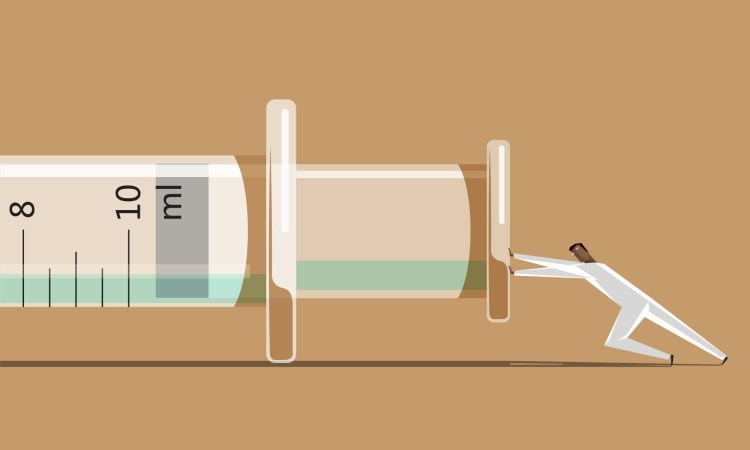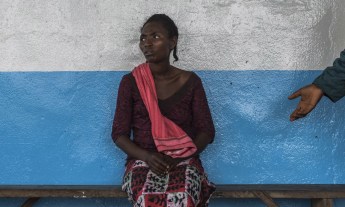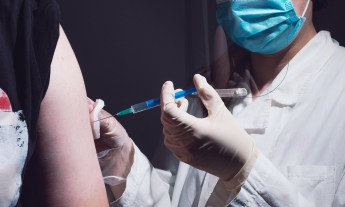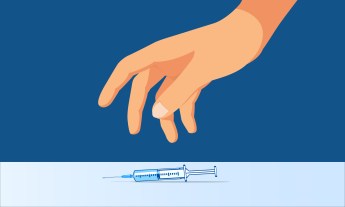
Half the vaccines that are manufactured each year don’t make it to their destination — they get lost or damaged as they travel between the factory and the local health clinic. It’s not just a tremendous waste, it’s a killer: Each year, 1.5 million children in the developing world die for no reason other than a failed vaccine delivery. Neuroscientist and TED Fellow Catharine Young is working on a tool she thinks can help: Vive, an app that tracks and monitors vaccines on their journey, while gathering data to improve deliveries in the future. As she prepares to pilot the app in her native South Africa, Young shares six insights on this simple but potentially life-saving idea.
1. The biggest obstacle to getting vaccines to patients: shoddy infrastructure. “Vaccine delivery is a race against time anywhere, but in the developing world, you have limited functioning vehicles, limited electricity to keep vaccines cold, limited road infrastructure,” says Young. “Obstacles depend on country and region, but the common problems include handwritten records, a lack of support staff, and poor transport and logistics.” Young’s app will help vaccine delivery drivers avoid these problems now — and later, help resolve the problems permanently by delivering data that helps authorities find and fix infrastructure gaps.
2. Follow that truck. Some attempts to track vaccines focus on monitoring individual vials; others zero in on single components of the supply chain (such as developing semi-heat-resistant vaccines to avoid the need for cold storage). Young’s insight: Track the delivery driver. Why? Because wherever the driver is, that’s where the vaccine is — and tracking their journey means understanding important context. “We’ll provide the drivers with ruggedized mobile phones with camera, GPS, and the app already loaded. The driver inputs receipt of the vaccines, and the app tracks their progress,” she says. “If, say, the road is impassable, or the route is improperly marked, causing a delay, the driver logs the information.” That means the people running the supply chain know if or when the vaccine delivery made it to its destination — and the driver can share details when something went wrong, making it easier for officials to find the problem and keep it from happening again.
3. Checklists work. Pilots and surgeons already use checklists to save lives; a simple checklist will help guide delivery drivers too, says Young. One example: “Vaccines are now tagged with temperature-sensitive stickers, so if they become too warm or too cold, the stickers change color. With the checklist, drivers can be prompted to take regular pictures of these stickers with their phone camera during the course of the journey, showing where and when any problems occurred.” The checklist will also prompt drivers to note when the vaccines arrive at the clinic, and confirm whether the delivery was properly inspected. And if there’s no WiFi connection? No bother. Updates are stored on the phone until the driver gets back in WiFi range.
4. Monitor the supply chain now, fix it later. So what happens to all the data? “Our company will track the information and make it available directly to supply-chain partners, such as vaccine distribution companies. All information from the drivers’ phones will be communicated back to a central location and can be viewed via a web portal,” says Young. “We’re also gathering all the information into a new, detailed dataset that can be used to pinpoint and fix the problems in the future. We hope this will contribute substantially to alleviating vaccine distribution problems, which are a big deal. In fact, the World Health Organization has called for prioritizing the collection and analysis of supply chain data as a way to try and develop real solutions.”
5. Public health needs to get serious about logistics. “Large, for-profit companies use logistics companies to help them ensure delivery — because they can afford it,” says Young. “The unfortunate reality is that, in the developing world, vaccine delivery clients do not have those financial resources.” Young realized that this novel approach to vaccine logistics might provide a useful way into solving a problem after conversations with her husband, a professor at George Washington University Medical School, and her brother, who happens to run … a logistics company in South Africa. “Together we saw an enormous gap in the health field, especially in regards to the delivery of vaccines,” she says. “What’s keeping the gap from being bridged in public health is money — and we are providing a solution to that.” Thanks to a partnership with her brother’s company, Vive will be cheap or free for vaccine providers.
6. Vaccines aren’t just about public health — they’re a vital part of world security. While not working on the app, Young works in the Chemical, Biological and Nuclear Defense program in the U.S. Department of Defense. “I work with a team that focuses on mitigating biological warfare, both in the traditional and nontraditional sense,” she says. “We work closely with governments all over the world to reduce the threat from biological weapons, from traditional bio-warfare agents to those that do not have a history of being weaponized but are still a major security concern.” How does this overlap with her interest in public health? “Vaccines are a live thread in my work, because it’s a way we can keep people healthy and stop the spread of weaponized disease,” she says. “By vaccinating people, we’re helping to decrease threat in the world.”
Featured image courtesy iStock.












